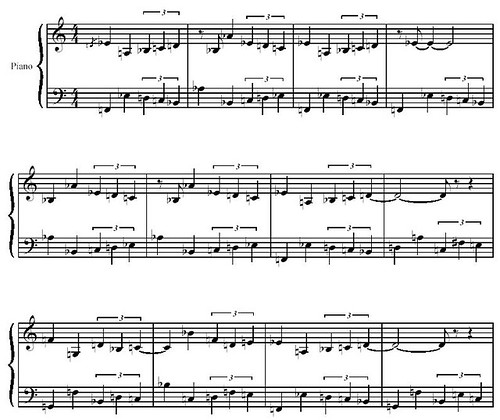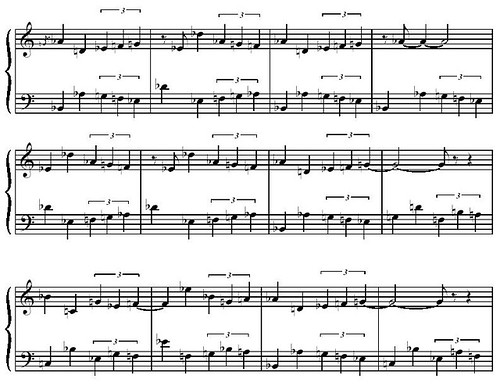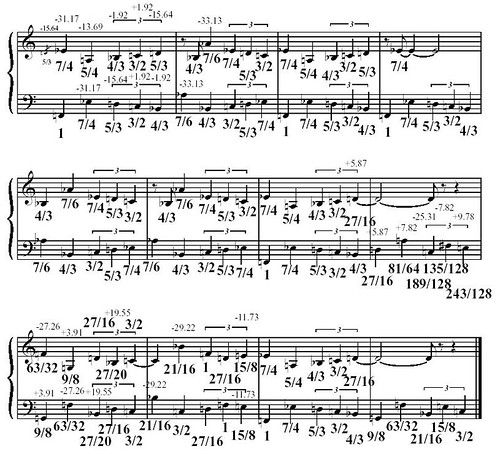
Example 1: Melody 3 ("Contrarian Blues")
This is a straight 12-bar blues in "F" that I've been playing around with.
Transposition
Transposition is the operation of raising or lowering each pitch in a melodic sequence by a fixed interval. For example, if we transpose up by a perfect fourth we end up with a blues in "B Flat."

Example 2: Melody #3 Transposed up by a perfect fourth.
7-limit Just Intonation
Idiomatically, the blues suggests 7-limit just intonation to my ears. Largely because of that flat (by almost a third of a "regular" semitone) 7/4 minor seventh degree that is such a big part of that "bluesy" sound. One possible 7-limit realization of this melody might look like this:

Example 3: Melody 3 in 7-limit Just Intonation.
Using the prime factors of 3, 5 and 7 to tune a melody opens up some interesting possibilities that become apparent in the last 5 bars of this blues example. The "F natural" appears as the 1 (tonic) and as a 63/32 (-27.26 cents flat). The "D natural" major sixth also appears with a couple of alternate tunings within the same passage working as a 5/3 or 27/16. I particularly like the modulation that appears in bars 7 and 11 where the D is a 5/3 in the bass part just ahead of the 27/16 in the treble. Other multiple tunings are the 5/4 and 81/64 major thirds (A natural), 3/2 and 189/128 perfect fifths (C natural) and 243/128 and 15/8 major sevenths (E natural).
The reason for multiple tunings for these intervals is harmonic context. As this blues makes its modulation for the vi-ii-V-I from bars 8 - 11 the intonation of the scale parts will reflect the gravitational pull of each new tonic. For example, the 63/32 F natural is the 7/4 of the 9/8 G natural (9/8 * 7/4 = 63/32). The 27/16 D natural is meant to sound as the 3/2 perfect fifth away from the 9/8 G natural (9/8 * 3/2 = 27/16) as opposed to the 5/3 major sixth that sounds when F natural (1) is the tonic.
For the next melodic study post I'll take a look at Just Transposition and Retrograde Melody from the atonal Melody #2.


No comments:
Post a Comment